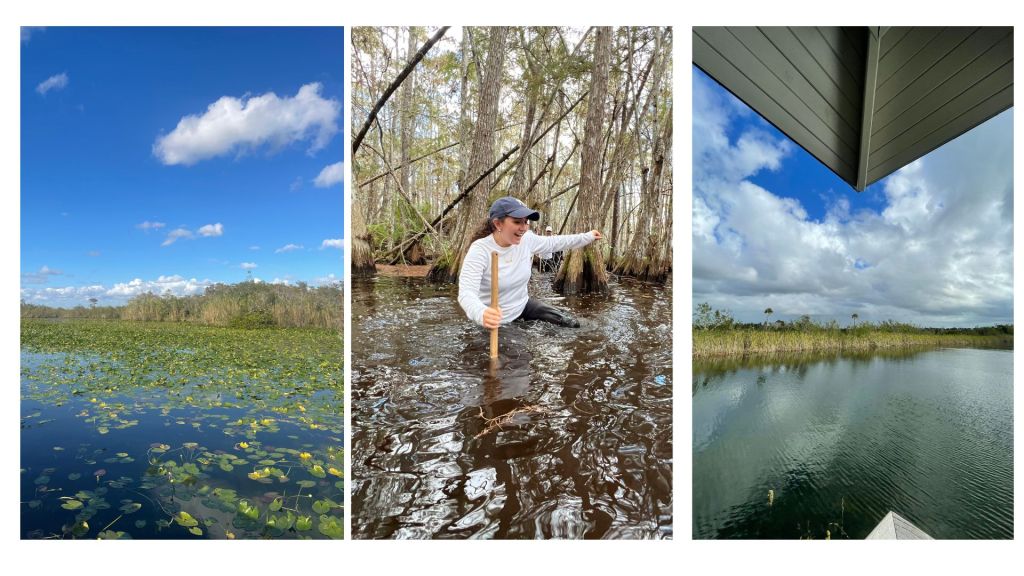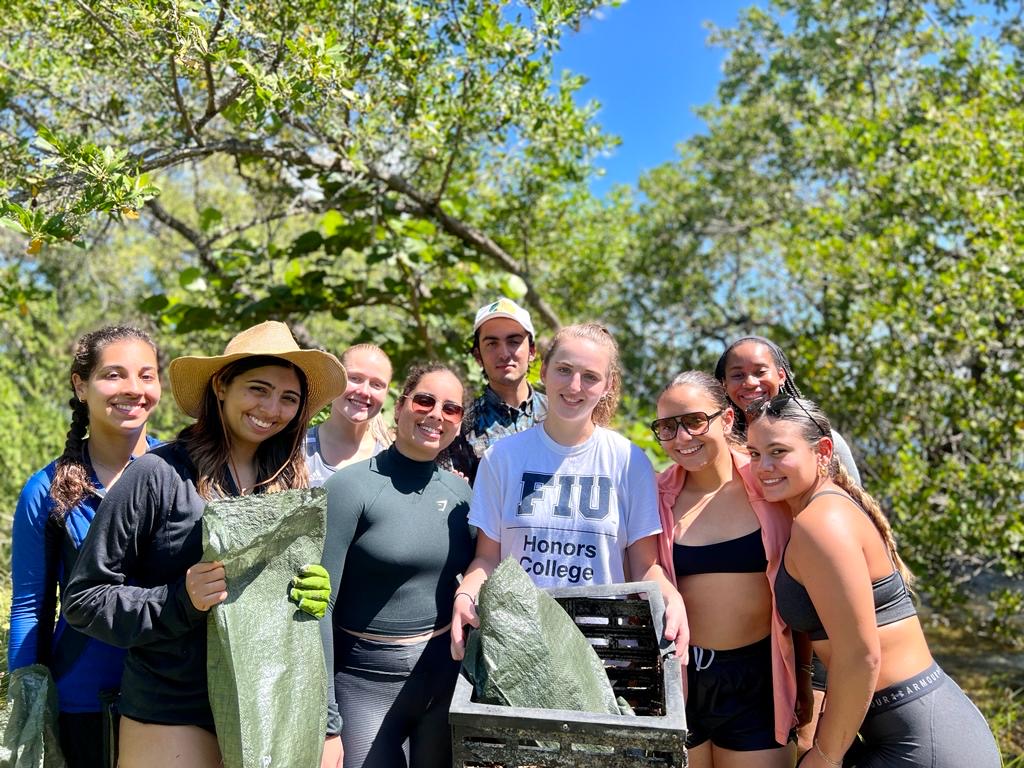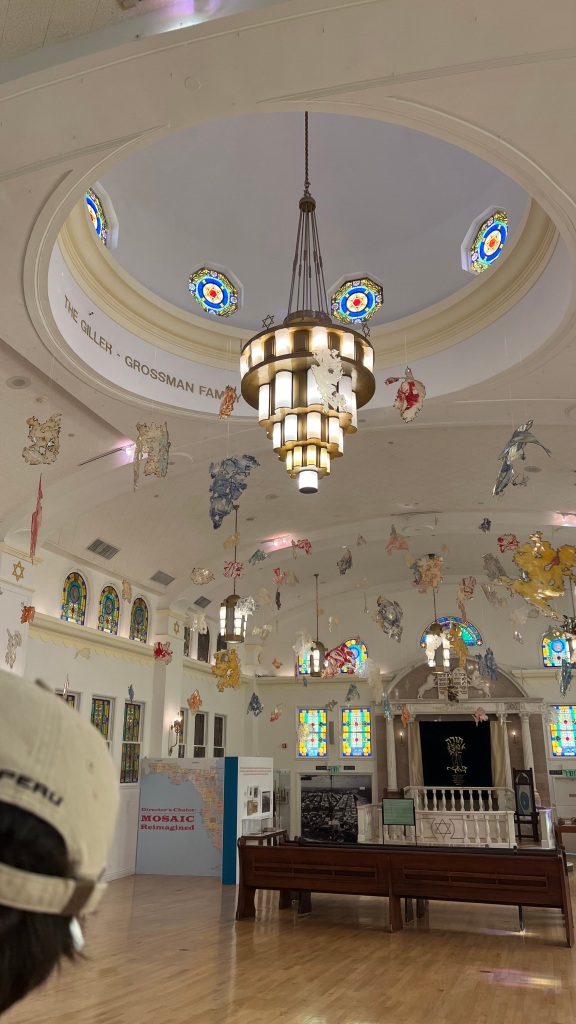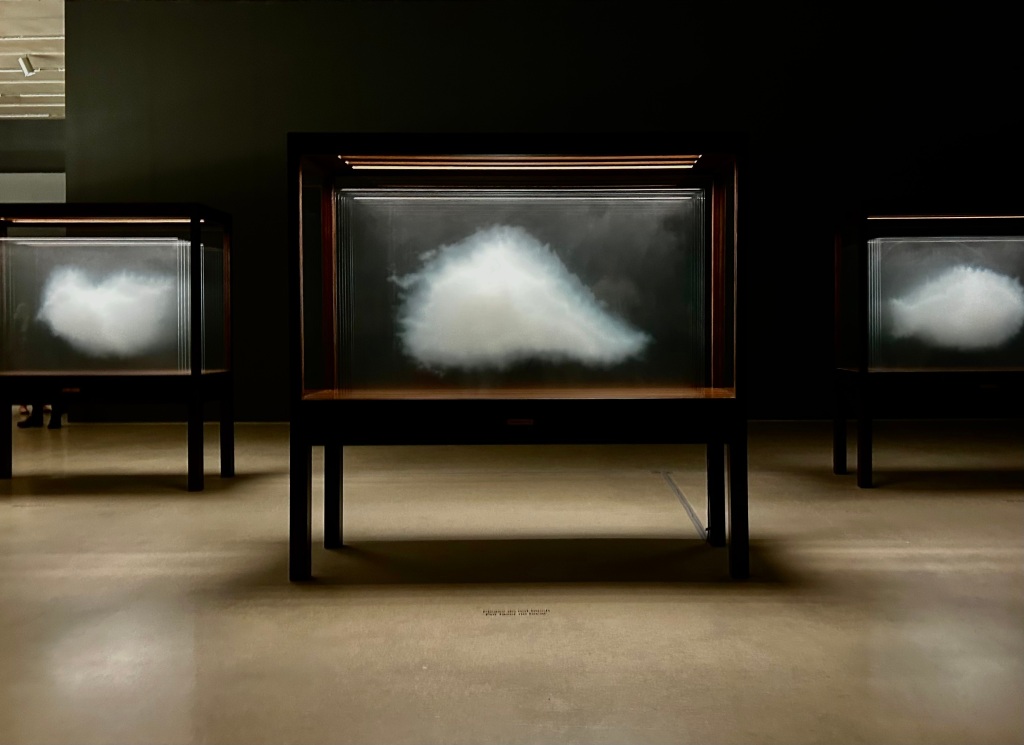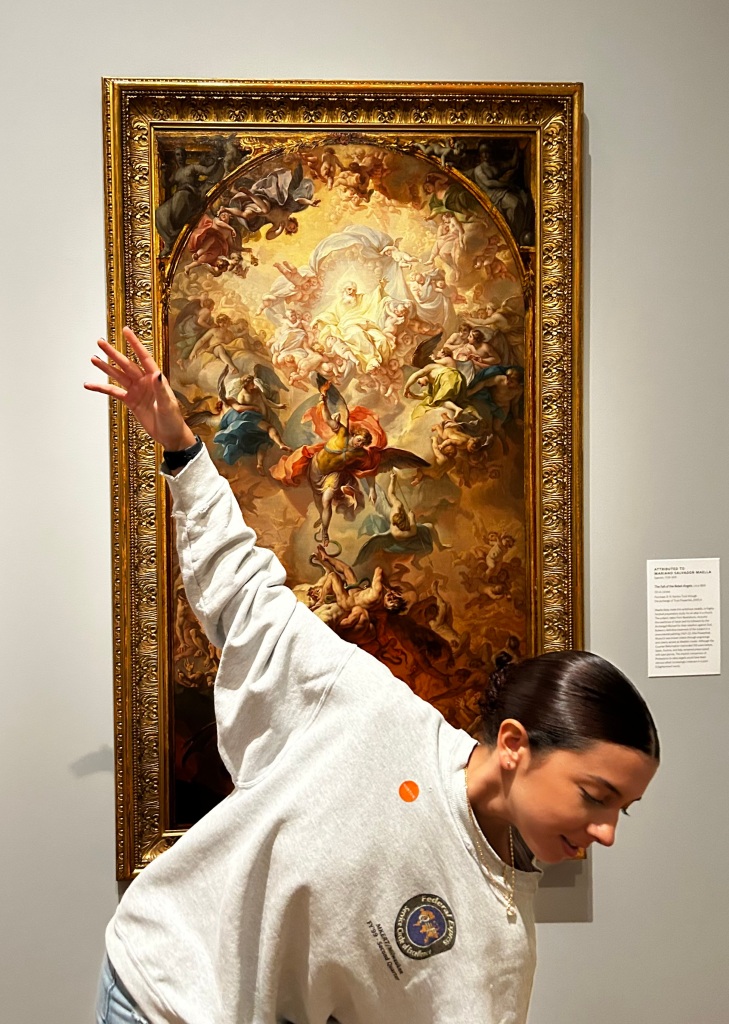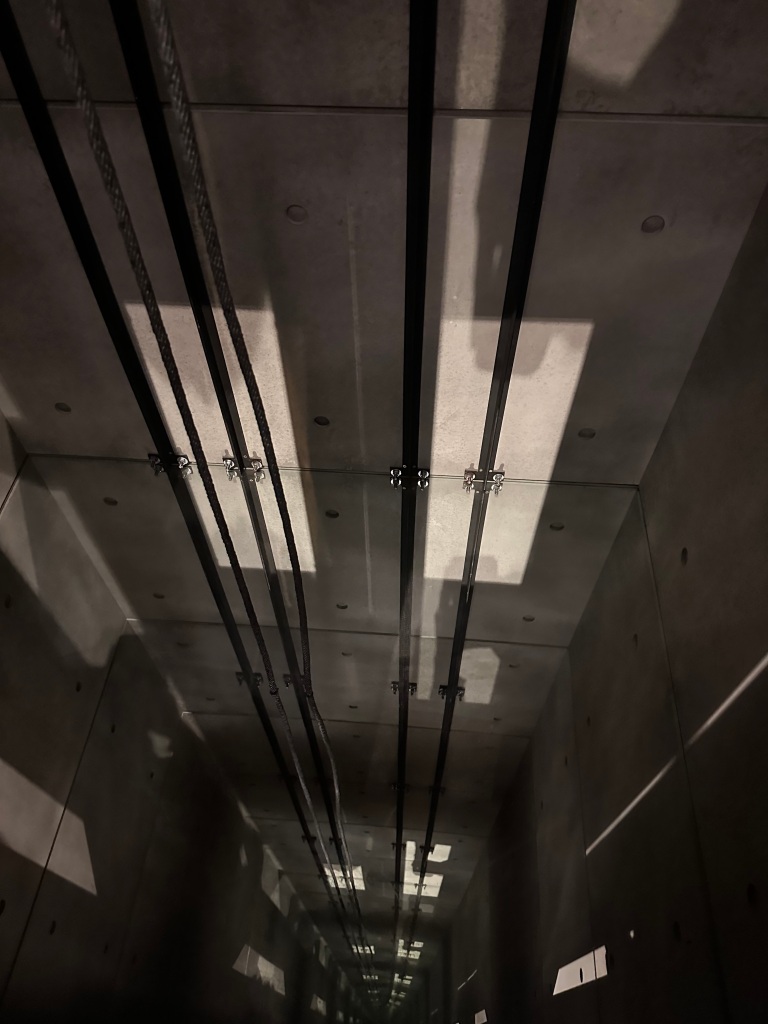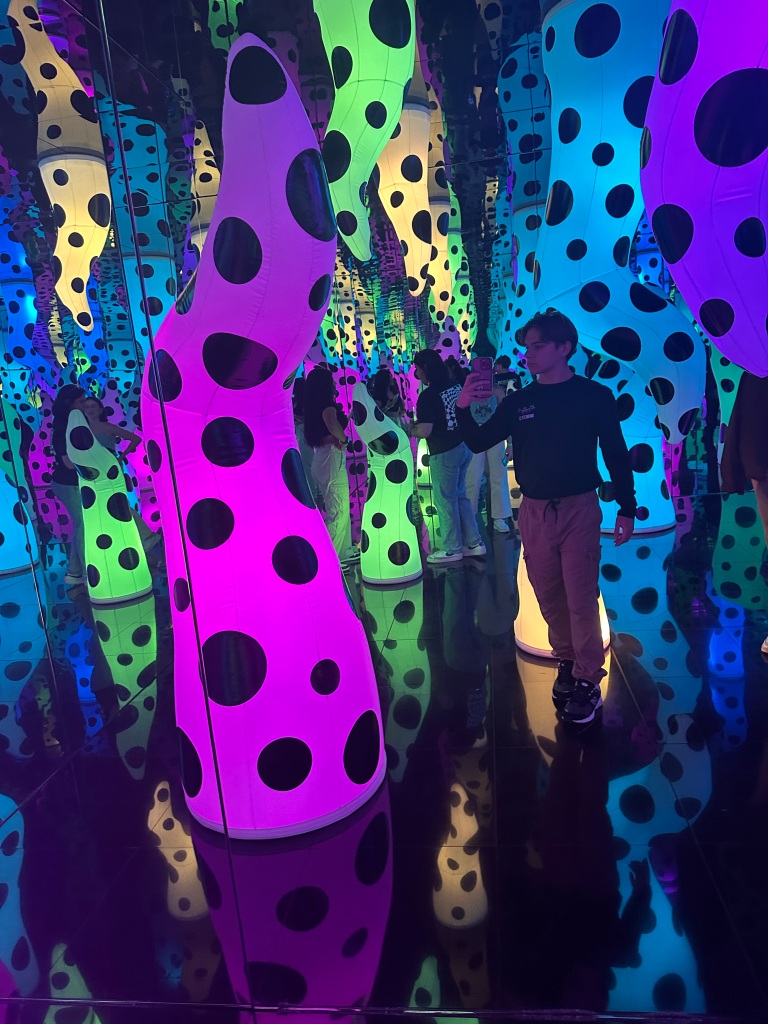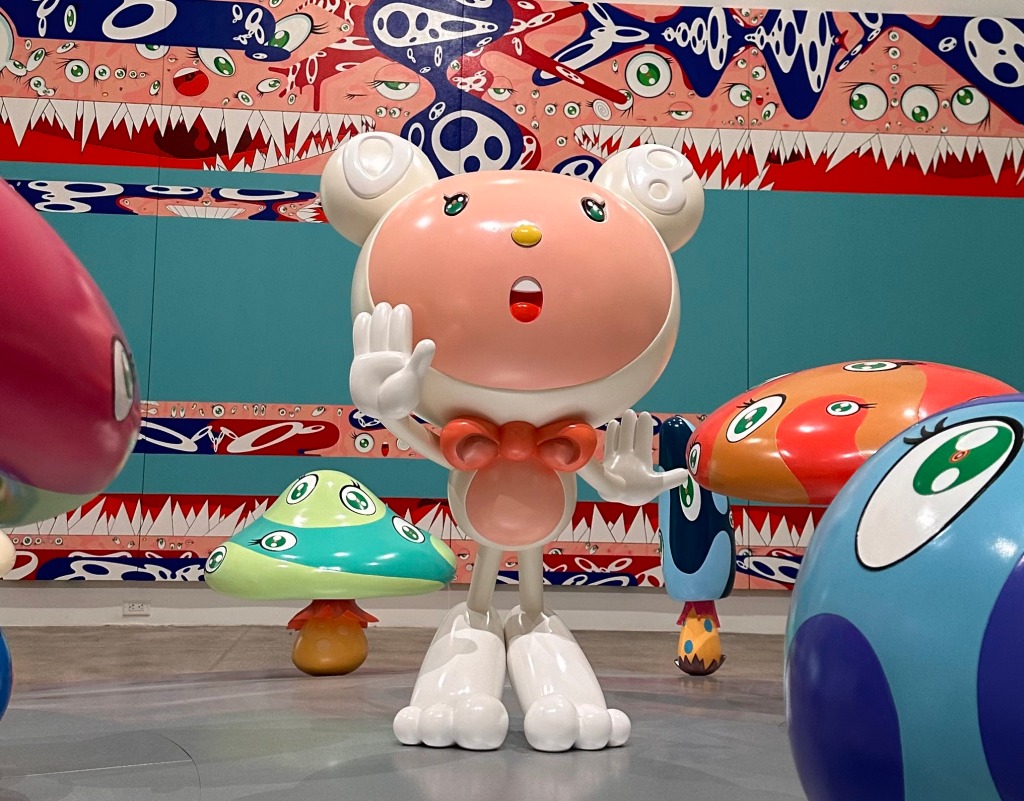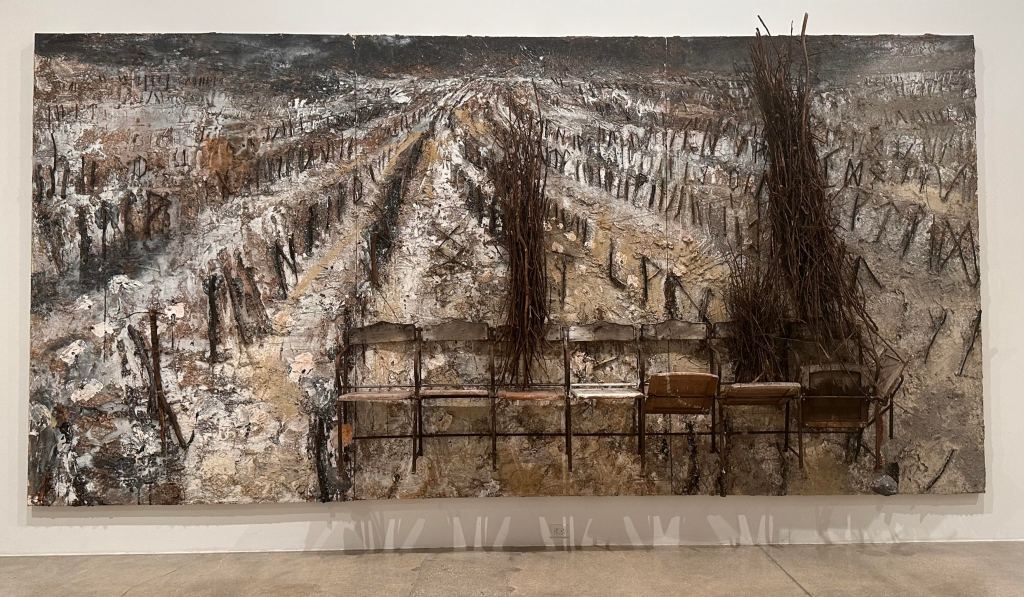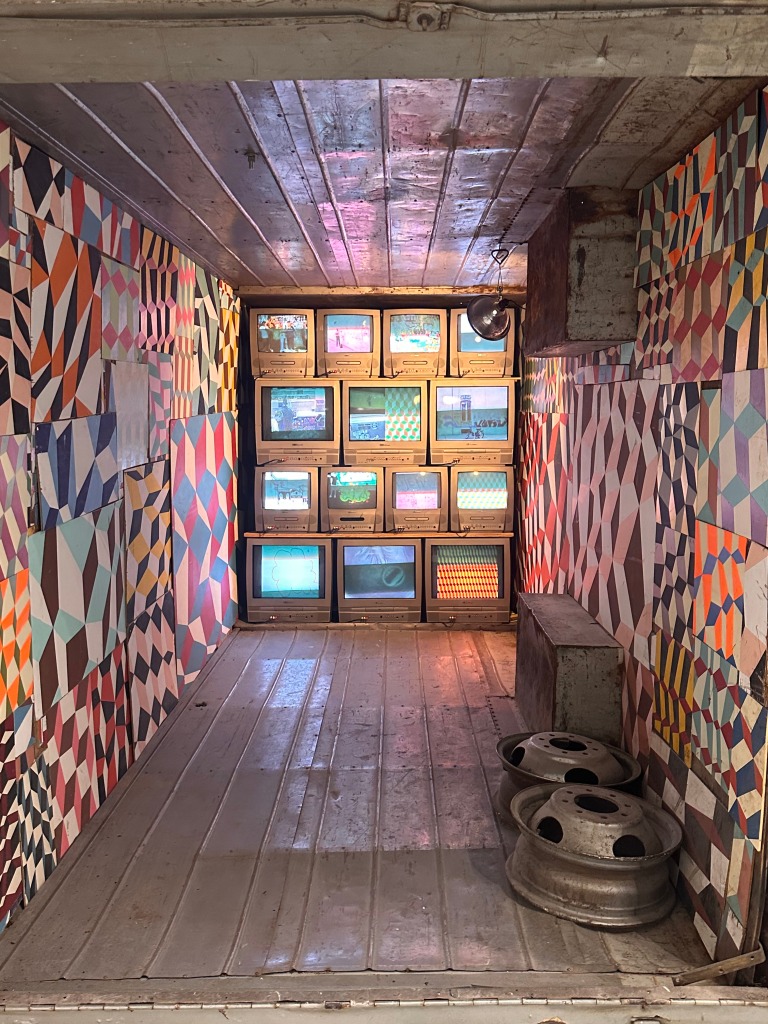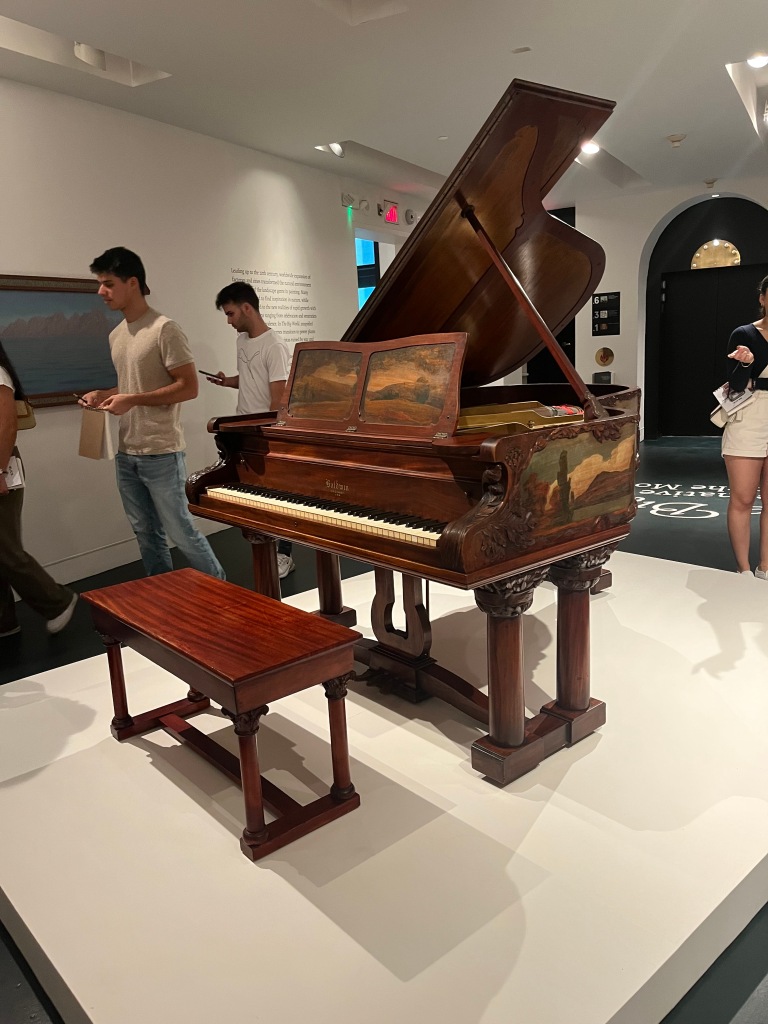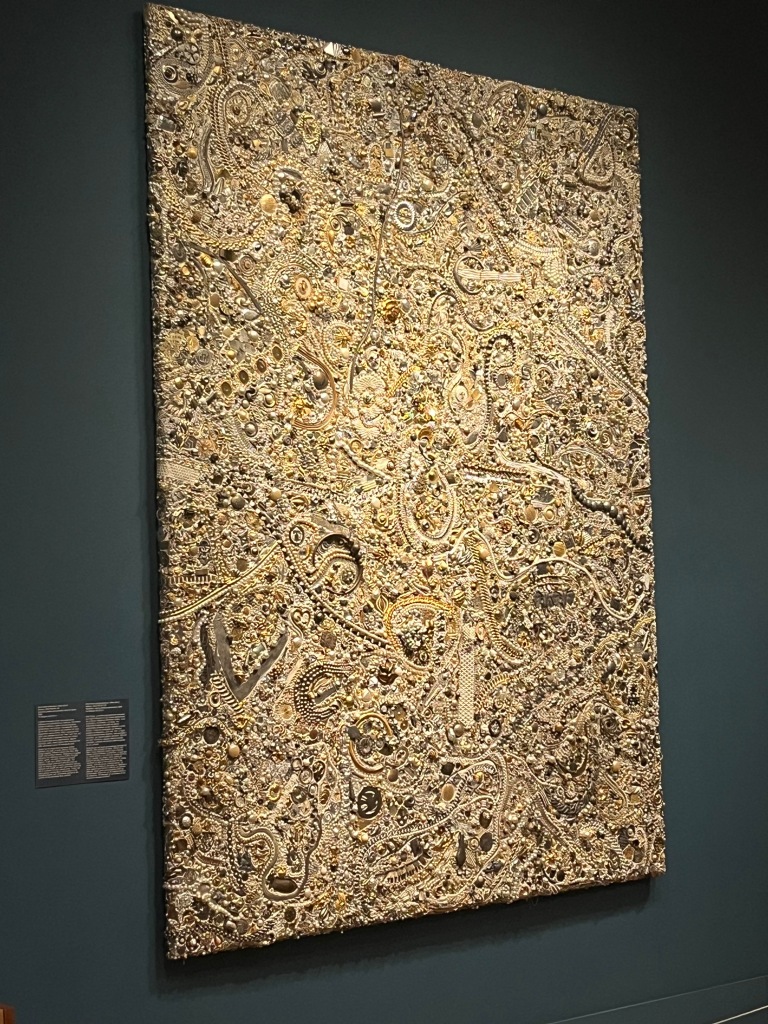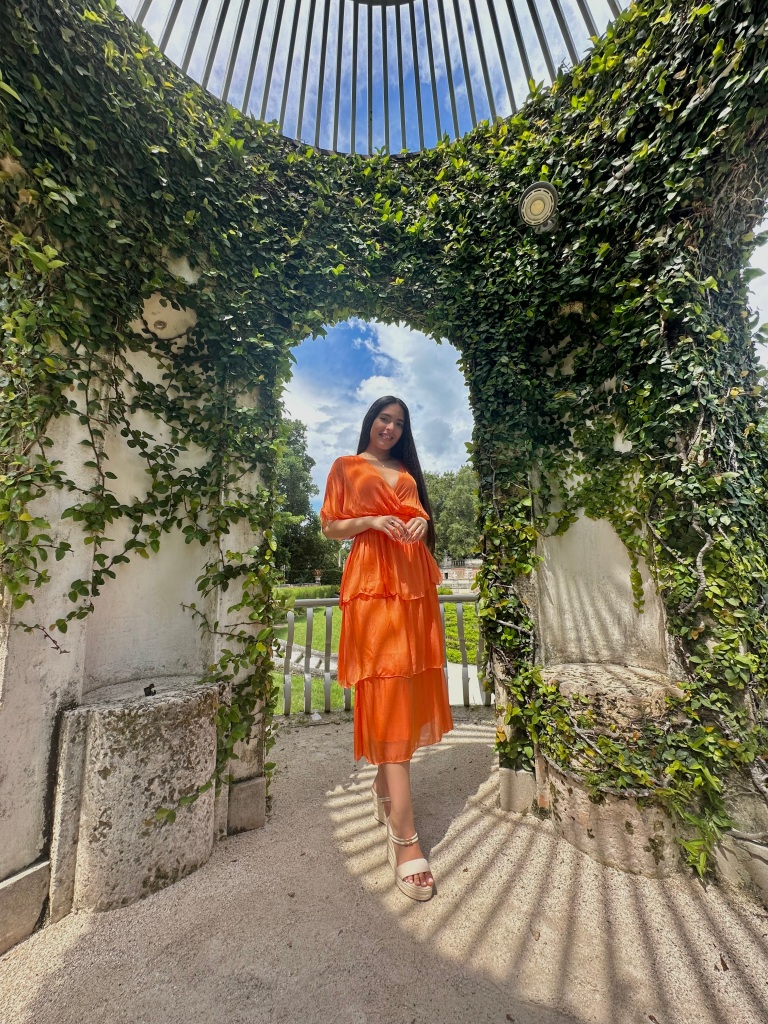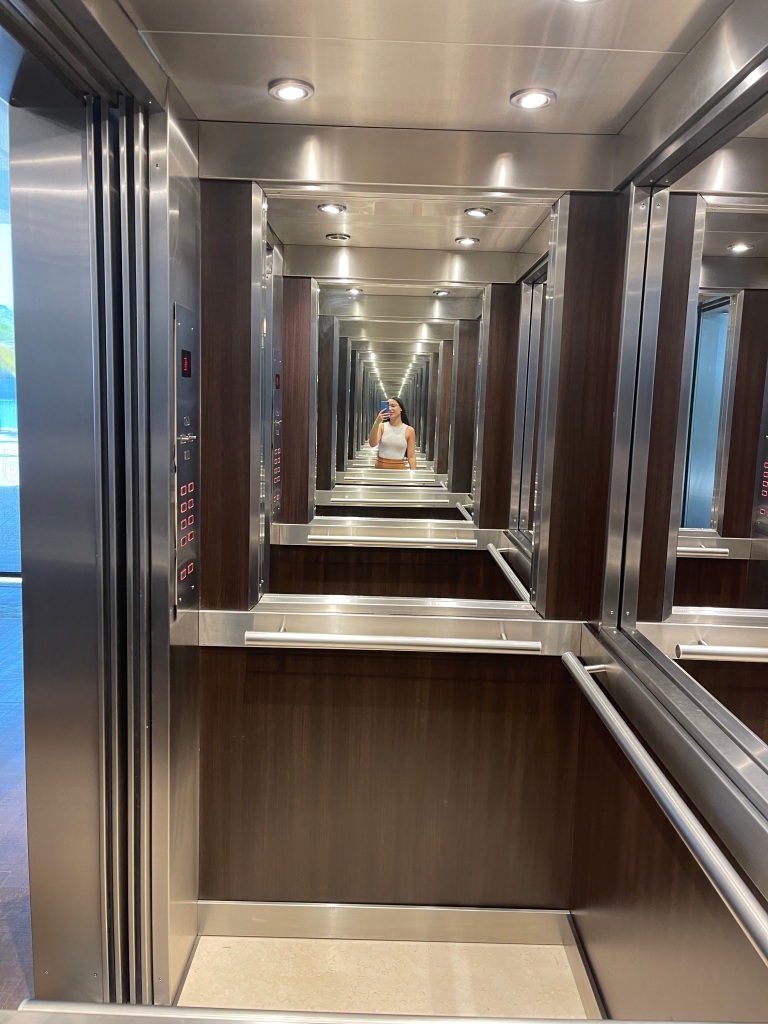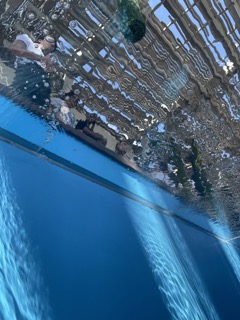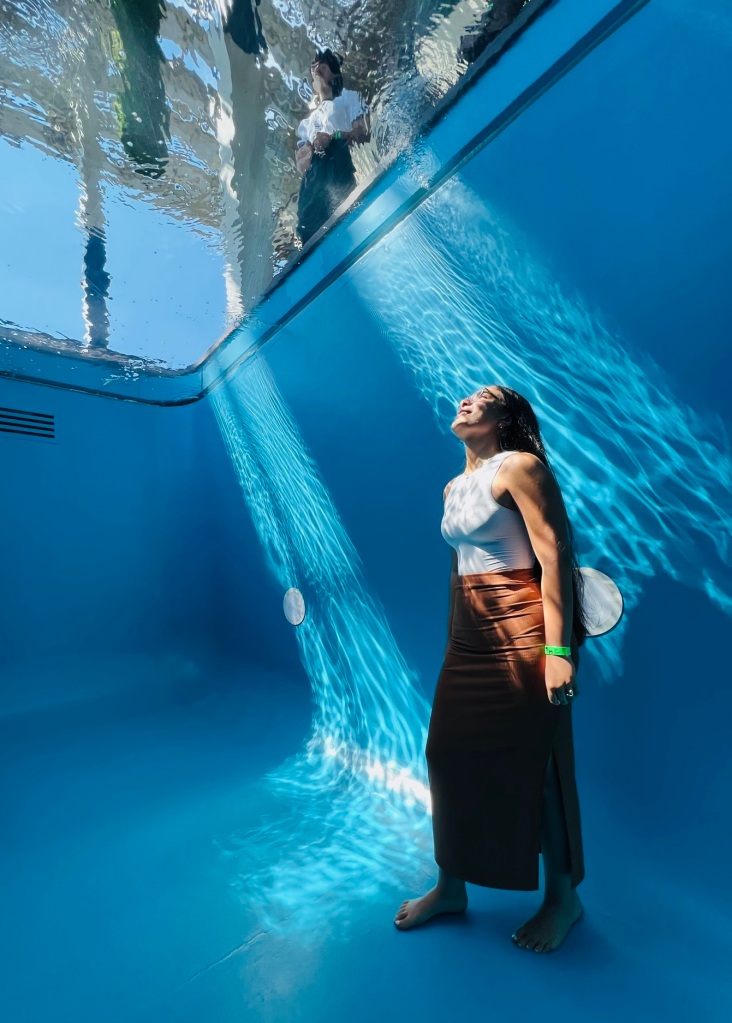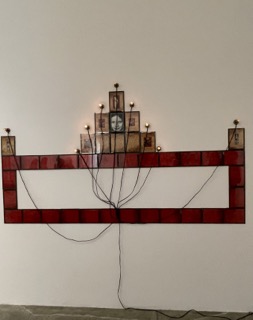John Paul Riley is a junior student at FIU pursuing a degree in Computer Engineering accompanied with a minor in Math. His ambition is to graduate with multiple skill sets like coding in different languages to be able to apply his engineering knowledge. He also hopes to start up his own tech company where he can incorporate his electrical knowledge and coding application. Outside of his academic pursuits, his hobbies are DJing, traveling to different countries, and hanging out with friends.
Art Encounter as Text

“Art”
By John Paul Riley of FIU, 31 August 2023.
I’m not very familiar with the art culture in Miami, besides the Miami Art District and Brickell. Walking around those areas, I wouldn’t be able to interpret exactly what I’m looking at or what purpose it had in being there in the first place but I always appreciated it being there. I never really explored too much outside of my favorite artist who is Keith Haring.
My knowledge of what exactly is contemporary art outside my understanding that its art made recently is little to none. I wouldn’t have known Miami is one of the leading cities for contemporary art in the world but I feel as if if you were to ask someone if it was, Miami has too much culture and diversity to not be in the lead for cities carrying contemporary art.
I’m in this class to become a little more cultured, to explore Miami more, and to get interested in something that isn’t very closely related to my major which is computer engineering. If art were to conjure a single image in my mind, I’d think of the famous “Comedian” piece.

https://www.vogue.com/article/the-120000-art-basel-banana-explained-maurizio-cattelan
I hope to leave this class with some new knowledge and understanding of the world and art around me. Being able to appreciate art more and be more acclimated to really understanding and dissecting pieces instead of just thinking this looks cool. I’m most excited to go to visit MOCA, I love where contemporary art is now and how artist all have their own twists of it all.
PAMM As Text
“Liminal Spaces”
By John Paul Riley of FIU, 10th of September 2023.
When you search up “liminal spaces in art” the first search gives a definition of liminal space as “the time between the ‘what was’ and the ‘next’.” (1). When visiting the Perez Art Museum and analyzing liminal spaces used in art, I was given the impression that it’s moments that are almost surreal but not at the same time. For example, they had an exhibit where it was multiple angles of a waiting room. At first glance, I was confused at what I was looking at but after a few moments, I realized why something as simple as a waiting room gave me such an out of body experience. In life, we mostly remember where we begun and where we end our multiple journeys. The middle experiences leading up to a moment are almost forgotten. Like when waiting for an appointment, our brains seem to be so under stimulated just by waiting that we seem to skim over it when recalling the situation.

Original fine art © Evan Wilson. Daily Paintworks. (n.d.). https://www.dailypaintworks.com/fineart/0bb800cf-7452-4f4d-940f-7557a630f6f3
Using Evan Wilsons piece “Liminal Space” is a perfect example of the clever use of liminal spaces. Before beginning your long day at work or school, you get ready in your room. You almost lose that sense of reality of looking at a messy room because it isn’t something you actively think about in the grand scheme of your day.
Liminal art examines those moments in time where we are leading up to a destination. There was another exhibit that I found so interesting at the Perez Art Museum where there was a black corridor we walked through and on your sides you can only see a sidewalk with a sewer drain. Again, perplexed with why this was considered art, after being explained the use of liminal space like walking on the street from one place to another I began to recognize how ingenious it was.
Another example of Liminal Art seen at the Perez Art Museum is the pool exhibit they had outside the museum as seen in my photo. The idea of liminal space being used here is being inside the pool and creating this new reality. The lighting and ambiance of having other people look down at you while being able to breath under the pool was the liminal space that the artist was trying to create.
I have a new found appreciation for liminal art, and gave me a new perspective when trying to examine art. I used to believe that art had to be this beautiful image on a paper made using some tools and just be something aesthetically appealing to look at. I know understand that art comes with a message and some psychology of how we think and percieve things. Every piece came with a message and gave me a new perspective of how to understand other aspects of life besides art.
(1): Liminal spaces. Cambridge Art Association. (n.d.). https://www.cambridgeart.org/liminal-spaces/#:~:text=About%20%7C%20%E2%80%9CA%20liminal%20space%20is,and%20let%20it%20form%20us.%E2%80%9D
Norton As Text

DE KOONING. INTERCHANGED, 1955
By John Riley of FIU, Norton Art Museum, September 22nd 2023.
The drive to go to the Norton Museum at first seemed like such a daunting task, but I wasted energy complaining about it because it was so far the best Museum I’ve ever gone to. In a relatively short time frame I was able to experience thousands of years of art in a single building and all of them were breathtaking. One that stood out to me the most (excluding the Keith Haring painting I was able to awh at for a solid few minutes since he is my favorite artist) was abstract expressionist.
Abstract Expressionism was a movement that came about after World War 2 in New York. The movement completely moved away from what was considered traditional in the sense that it wasn’t reflective of something you’d normally see and had no real focus on what to look at in the piece. It was supposed to present the artist’s individual psyches, at first glance though most people would think my kid could probably draw this however no ones kid has and completely changed the scope of how people depicted art. (Abstract Expressionism, 2004)
Abstract Expressionist paintings don’t have any real clear focal point for the viewer to really pay attention to. It’s so much happening at once that you simply have to take everything in at once. In this particular piece though, in person you can see that the artist obviously placed multiple layers of paint on each different stroke. This style of abstract expressionism is considered “Action Painting”. (De Kooning, Interchanged, 1955)
Within the museum, they had a dedicated section to abstract pieces where you could see each artist implement their own little pizzazz into each of their own pieces. None even seemed to look like the other and I personally felt that even if I tilted my head upside to the right or to the left, I felt like I was looking at a completely new painting.
The Norton Museum of Art offered a welcoming setting for exploring new art, as well as the artistic movements that came before and after it while giving context on each painting or structure. Recognizing the significance of comprehending the antecedent and subsequent movements gave me an even deeper understanding and appreciation to art. My experience engaging with diverse art styles and artworks at the Norton Museum has not only enriched my appreciation for revolutionary art movements.
References:
Paul, Stella. “Abstract Expressionism: Essay: The Metropolitan Museum of Art: Heilbrunn Timeline of Art History.” The Met’s Heilbrunn Timeline of Art History, 1 Jan. 1AD, http://www.metmuseum.org/toah/hd/abex/hd_abex.htm.
“Norton Museum of Art.” Bailly Lectures, 28 Sept. 2023, baillylectures.com/miami/norton-museum-of-art/.
de la Cruz As Text

GONZALEZ-TORRES. UNTITLED (PORTRAIT OF DAD), 1991.
By John Riley of FIU, de la Cruz/Rubell Art Museums, October 15th 2023.
After visiting the Rubell Museum and eviscerating some Popeyes for lunch with a friend. Our class visited the de la Cruz Art Museum and were given a tour by an FIU Honors College Alumni. I go into every new museums with no expectations because I’m too ignorant to even know what I’m expecting out of the experiences of going to different museums with different collections. From my cumulative experience from this class, De la Cruz was for sure not my favorite museum I’ve visited from the experience alone but is my new current favorite for the pieces of art it held inside of it. If that even makes sense.
The Museum had a lot more hands on art than other museums we’ve visited and being an engineer I don’t like sitting around and talking about the idea of something where as I could be working on the practicality of something to use in our everyday lives. I was able to eat art and take a poster home which I gifted my sister.
Felix Gonzalez-Torres was a gay Cuban American who used everyday materials to make his pieces but with the intention of the audience to physically interact with them. He wanted to manifest his work to be more dynamic so every time someone visits his exhibit it’s not exactly the same as it was before. His dynamic way of viewing everything was pretty progressive along side with how he thought society should act. He felt that everyday there was always change and that people should acclimate to it and its everyones individual responsibility to create their own view on it. (Felix Gonzalez Torres Wiki)
Felix made this piece called “Portrait of Dad” which is a stack of his fathers favorite candy and the pile weighed as much as his father did. Felix was a pretty silly guy though, to go along with this piece there is a quote that he said “You put it in your mouth and you suck on someone else’s body, and in this way my work becomes part of so many other people’s bodies. For just a few seconds, I have put something sweet in someone’s mouth, and that is very sexy.”. (GONZALEZ-TORRES. UNTITLED (PORTRAIT OF DAD))
Felix believed that there should be a greater overlap in private and public life relative to when he was alive which was from 1957-96. Its postulated that his works were inspired by the Bertolt Brecht’s theory of epic theater. With this in mind, he wanted to inspire people to create some social action with his pieces relating to love, loss, sickness, gender, and sexuality which in his time was something that wasn’t spoken about in public too often. He was definitely apart of a much greater social movement that helped society get to where its at today. (GONZALEZ-TORRES. UNTITLED (PORTRAIT OF DAD))
I’ve come to realize that I really enjoy artist who explore the idea of what we define as art but in more silly and goofy ways than others but also use their work to impact an idea much larger than themselves like Felix did in his multitude of work.
References:
“De La Cruz Collection.” Bailly Lectures, 13 Oct. 2023, baillylectures.com/miami/de-la-cruz-collection/.
“Félix González-Torres.” Wikipedia, Wikimedia Foundation, 12 Oct. 2023, en.wikipedia.org/wiki/F%C3%A9lix_Gonz%C3%A1lez-Torres.
Margulies/Locust as Text

Anselm Kiefer. Die Erdzeitalter, 2014. Margulies Collection
By John Riley of FIU, Margulies/Locust Art Exhibitions, October 20th 2023.
The day started off by visiting the Margulies Collection which is owned by Mr.Margulies who lets students visit his collection for free if you’re a Florida student and come with you’re student ID, which I thought was really cool gesture from him to encourage coming and appreciating art to the younger generation. When I walked into the museum, I was greeted by many intricate, bold, and exciting pieces of art that was either hanging on a wall, a statue in a corner, or even an entire room dedicated to one singular piece. After this though we went to a location in Little Haiti called the Locust Projects. I was able to meet an amazing passionate artist called Jen Clay where I had the privilege of being apart of one her pieces (Later on, I got to chase after people in a monster costume curated by her which was a lot of fun). Going to the locust project was the most insightful experience I’ve had as someone who isn’t an artist in the world of being an artist. It reminded me (as someone who is speaking from an engineers perspective) of a lab except the equipment and tools were different but the same love and passion of your work vibe was there. It was an awesome first time experience.
One of the many pieces that caught my attention at the Margulies was a collection of small statues called 21 backs by Magdalena Abakanowicz. It was hard to exactly understand what I was looking at first, however I realized the bodies can be perceived to be doing different things. I at first thought they might’ve been praying or waiting for something patiently like kids sitting around criss cross apple sauce position. However the author purposefully made the people like that to be up to interpretation. An anecdote she left with the piece that came from someone who witnessed the piece for the first time says that essentially our bodies can express more of our true emotion than our faces can. (ABAKANOWICZ. 21 BACKS, 1982.)
Also amongst all of the pieces there was a room that was basically on top of the Margulies collection that was covered in mirrors and had no roof on it. The piece was called “Your now is my surrounding”. I personally liked the cool photos you could’ve taken in it but it Olafur Eliasson used simple natural elements to get viewers to view the world differently with the use of mirrors. The idea behind the piece was to help see yourself see, which is a funny idea but it helps whoever experiences the room to see themselves and art differently all at the same time. (ELIASSON. YOUR NOW IS MY SURROUNDING, 2000.)
As an avid enjoyer of street art, I was pleasantly surprised to also see a piece by Barry McGee called “Truck Installations with TVs”. This piece was interesting to me because this piece helped translate counterculture to becoming something that people can actively see in museums. Barry McGee would roam the streets to try and find what he thought he could implement in his pieces to create some new art. Museums to me, act almost as a history book. Each piece contextualized to its time and who the creator was and their perspective of how the world is. Mr.Mcgee was also to help bring history of urban culture into museums which to me added a new page of history which isn’t commonly seen in museums everywhere. (MCGEE. UNTITLED (TRUCK INSTALLATION WITH TVS), 2004.)
All in all, I really enjoyed seeing the hands on approach of artist like Jen Clay and seeing their natural work space and how they thought about bringing their pieces into life. The Margulies Collection was also extremely fascinating because of it’s different histories and how you can see how much the owner takes care and appreciates the different works within his collection.
References:
“The Margulies Collection at the Warehouse.” Bailly Lectures, 22 Oct. 2023, baillylectures.com/miami/the-margulies-collection-at-the-warehouse/.
Wolfsonian as Text

Harry Clark. Geneva Window, 1926. Wolfsonian Museum
By John Riley of FIU, Wolfsonian Museum, November 3rd, 2023.
When I was walking to the Wolfsonian Museum, I noticed that the building had a lot of personality in it. It wasn’t your typical building on the side of the road. It looked older and looked like it held something important in it at some point for a long time. Shortly after beginning the class, we were explained to the building the history of the building and why it looks the way it looks. It used to be a storage space for a company that was remodeled to become a Museum, which seems like a common occurrence but I like the creativity of it.
Harry Clarke was a predominant stained glass artist. He began his stained glass art career with his dad because he used to be a church decorator that had a stained glass subdivision. He started producing mostly with his brother after his dad sadly passed away. His art is distinguishable by the creative incorporation of the window leading into the overarching design scheme and its rich color. He also used a lot of heavy lines in his work. His work was mostly made up of a lot of religious pieces. (“Harry Clarke”)
Harry Clarke created a piece to present to the league of nations in Geneva to offer to the Irish government. After presenting his masterpiece it was rejected by the Irish government. After not being accepted by the Irish government because it was seen as unrepresentative to the Irish people. I found the Geneva Window to be particularly funny. The portrayal of Irish culture wasn’t accepted by their own government because Henry Clark decided to show what it meant in his eyes to be a true Irish man. I found it funny and interesting to realize how deep in meaning some art goes and how it’s almost like a history lesson on our past drama. Taking into consideration the idea behind the art, who it is meant to be seen by, who the art might be gifted towards, how the art itself is actually perceived, and how the perception of the art also changes. (“The Wolfsonian FIU”)
I enjoyed going to this museum particularly because of how the class was actually done. There was an in-class activity done with a group to describe a painting that we were assigned in writing. But we passed our papers to others without them seeing what we wrote and letting them continue from the previous anecdotes. Everyone had a different perspective and focus on what was happening in each of the paintings even if it was a simple drawing. I enjoyed hearing about other’s perspectives and realizing that art is so multidimensional that everyone can enjoy a painting even if nobody is necessarily focusing on the same aspects of it.
References:
“The Wolfsonian FIU.” Bailly Lectures, 17 Nov. 2023, baillylectures.com/miami/the-wolfsonian-fiu/.
“Harry Clarke.” Wikipedia, Wikimedia Foundation, 27 Sept. 2023, en.wikipedia.org/wiki/Harry_Clarke.
Frost as Text
KELLEY. MEMORY WARE FLAT NO. 48, 2008.
By John Riley of FIU, Wolfsonian Museum, November 3rd, 2023.
The Frost Art Museum genuinely shocked me on how extensive it was being that the Museum was at FIU. I would’ve expected more people to go more often and appreciate it because it was amazing. I’m going back to revisit for the simple fact that I didn’t know how close I was to an authentic Keith Haring piece every time I went to school. I also like that they promote FIU made artists too, like with the head pieces they had on display.
The Frost Museum is quite quirky in my opinion due to the simple fact that it is regulated by the State of Florida since it’s funded by FIU which is a public university. Essentially implying that the museum can’t go insane and put whatever they want on display like some other museums. Mr.Bailly was explaining to us that they wanted to hang a sign that says “fuck you” or something to that regard outside the museum to build a small aesthetic but they couldn’t because it wouldn’t have been accepted by the people employing the people who manage the museum.
Mike Kelley was born in Detroit and was very against the Pop art in vogue that was popular at the time. He cared more simply about the message his art was sending than how it looked. One of his famous quotes was “I am more interested in questioning the conventions of reading within a given genre.”. In his painting “Memory Ware Flat No. 48”, he used a Canadian tradition of decorating our day to day items with other random items. His purpose for this piece was to show the connection between our almost worthless junk and reminding us of the sentimental value it holds. I found the idea trivial but it served its purpose well. It made me think about the little intricate things that were commonly used in my life that gave me good memories. (Frost Art Museum FIU)
Mark Bradford was born in Los Angeles and his mother rented/worked in a salon. Mark would work there on occasion and ended up getting his hairdressers license. Mark’s artistic identity was combining collages with paint. He’d apply different techniques to his paint collages like tearing, shredding, and sanding it down. In his painting, “IN WHICH HE SHALL BE”, he used inspiration from his mother’s hair salon because to him it was a meeting place in their community for diverse different people to meet. Bradford expressed that by using different items like posters he’d find around his neighborhood in this work and also included excerpts from the preamble and first article of the Constitution of the United States. He wanted to express how the rights and liberties of its citizens in his perspective as a gay black man has diminished which is shown by the large golden slash over the words. I found this piece to be really creative and I can understand the empowerment that it must’ve given black communities because he was also named on the top 100 most influential people in 2021 in the times magazine. (Mark Bradford Wiki)
All in all, this museum needs to be more widely spoken about at FIU because it’s incredibly well managed and has amazing pieces to share for the public (especially since it’s free, which is insane). I’d go back just to take more pictures of the Keith Haring piece they have but the explanations for all the paintings and sculptures was phenomenal. It made me appreciate paying for tuition slightly more.
References:
“Frost Art Museum FIU.” Bailly Lectures, 18 Nov. 2023, baillylectures.com/miami/frost-art-museum-fiu/.
“Mark Bradford.” Wikipedia, Wikimedia Foundation, 6 Nov. 2023, en.wikipedia.org/wiki/Mark_Bradford.
Art Final Reflection
Photograph taken by John Riley (Miami, FL 2023) / CC by 4.0
By John Riley of FIU, Art Final Reflection, December 12th, 2023.
To be honest, I picked this class because I had no idea on what to do for my honors class since I joined late and there wasn’t a lot of space in other classes. I didn’t expect to genuinely enjoy this class because I wasn’t ever a big art guy in the past. I actually thought I wouldn’t like the course because in highschool I was a bit put off by art because the art history teacher in my school didn’t like me (and I didn’t like her). This class made me realize the massive art scene that there is in Miami, that I never realized was there before. I would recommend this class to anybody in any major. I feel that this class helped me grow my cultural knowledge, my knowledge of Miami, besides obviously art and art history.
Visiting all these museums made me realize that art was more than a tax right off for rich people. It’s where people can write out a bit of history without using any words. It’s a way for people to dictate their thoughts that can have super deep meanings or be something more light hearted like a vacuum hanging on a wall. I enjoyed watching history get unraveled for me from a painting or structure. It was also amazing to see the evolution of how art got to where it is today. I particularly enjoyed contemporary art from all the museums, it’s exciting for me to see where it will continue off too.
I also hated the fact that we had to blog after every class if I’m being honest. Now I kind of appreciate it, I have a bunch of photos that I took throughout the semester and well documented recollections of my visit that I can go back and appreciate later.
This class didn’t feel like a class after looking back on it, it felt like a series of experiences I shared with other FIU students. Since it didn’t feel like a class besides the work I had to do at home, it felt like a more of an enjoyable experience. My favorite museums were easily the Rubell Museum, then the Norton, and lastly to round off my top 3 is the Perez Art Museum. The Rubell had the pieces I enjoyed looking at the most. The Norton was far and that offset my expectations but it was awesome. Lastly, PAMM was where the adventure started so it holds a little place in my heart now. I’m glad I took this class, it left me with a lot of memories and now I’m an art guy.








